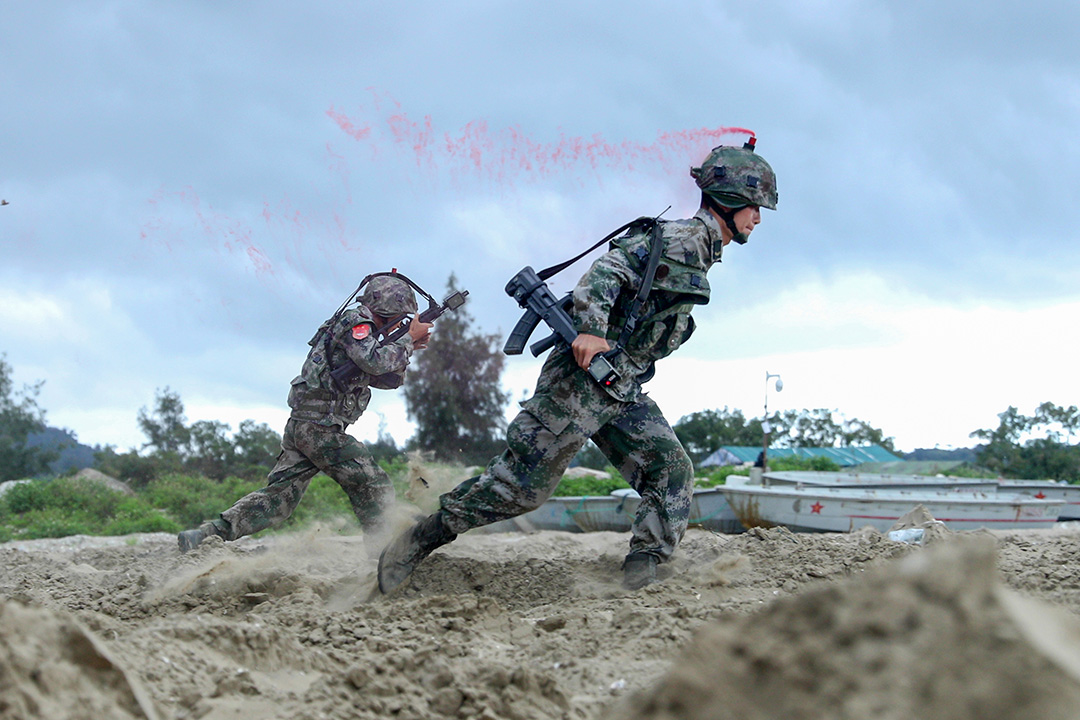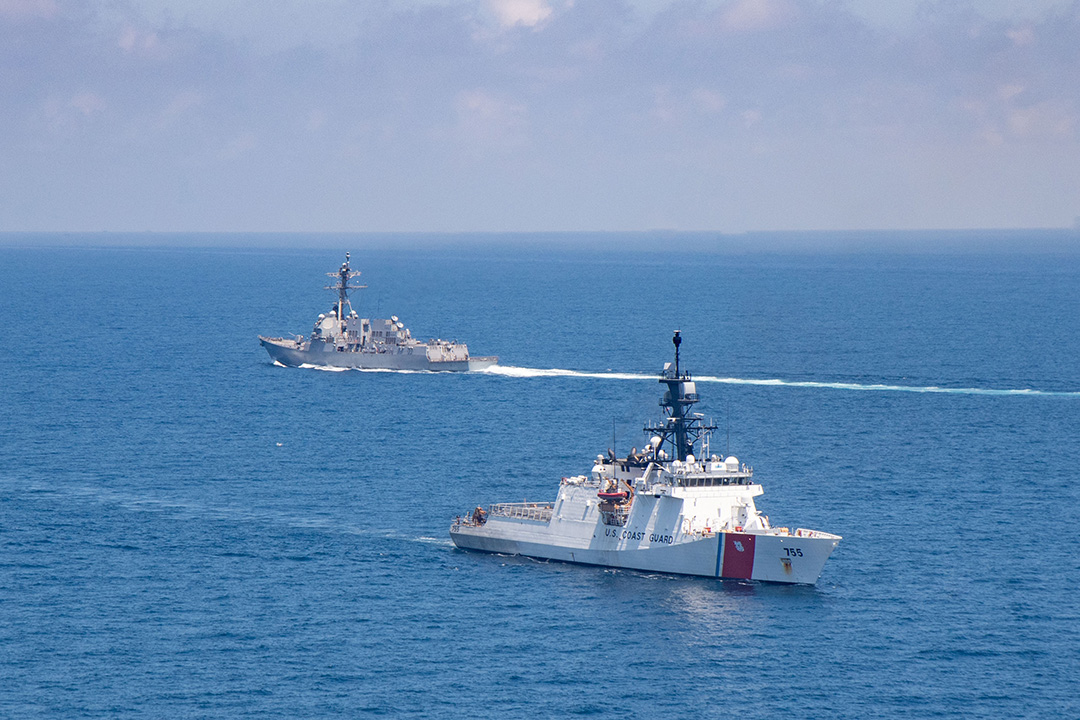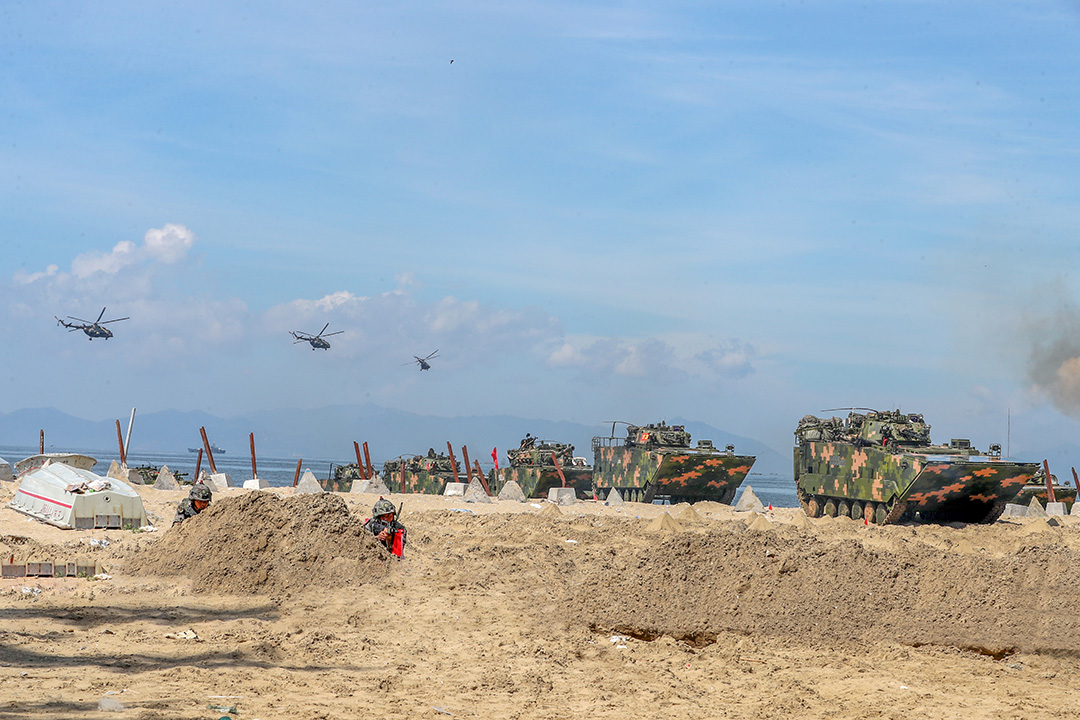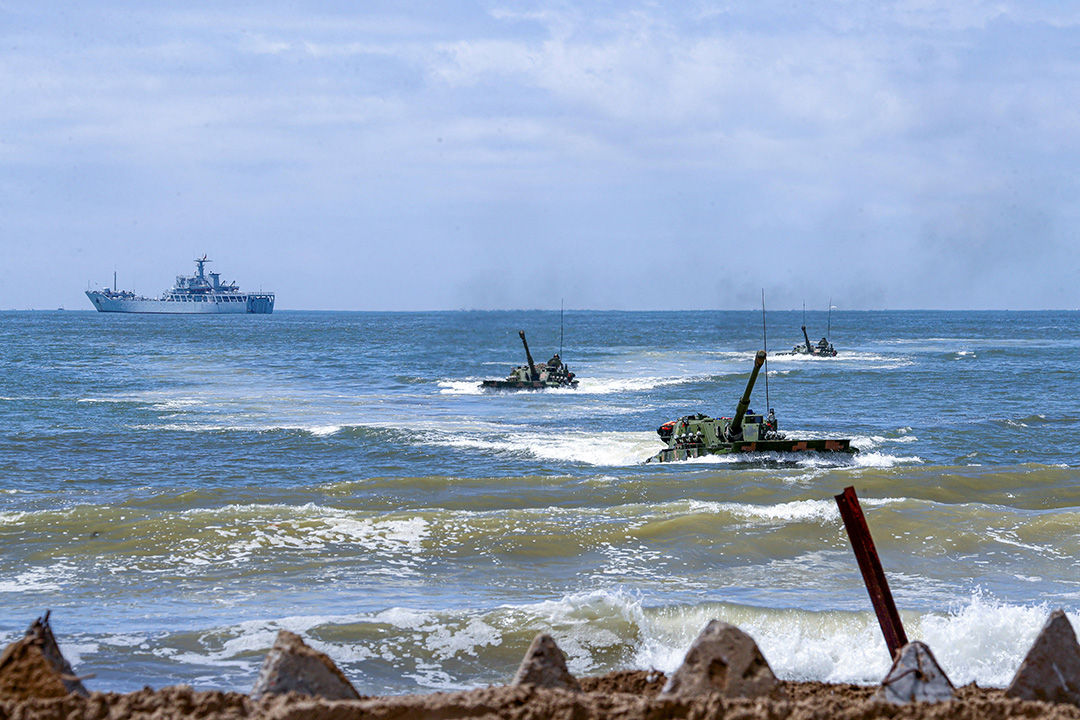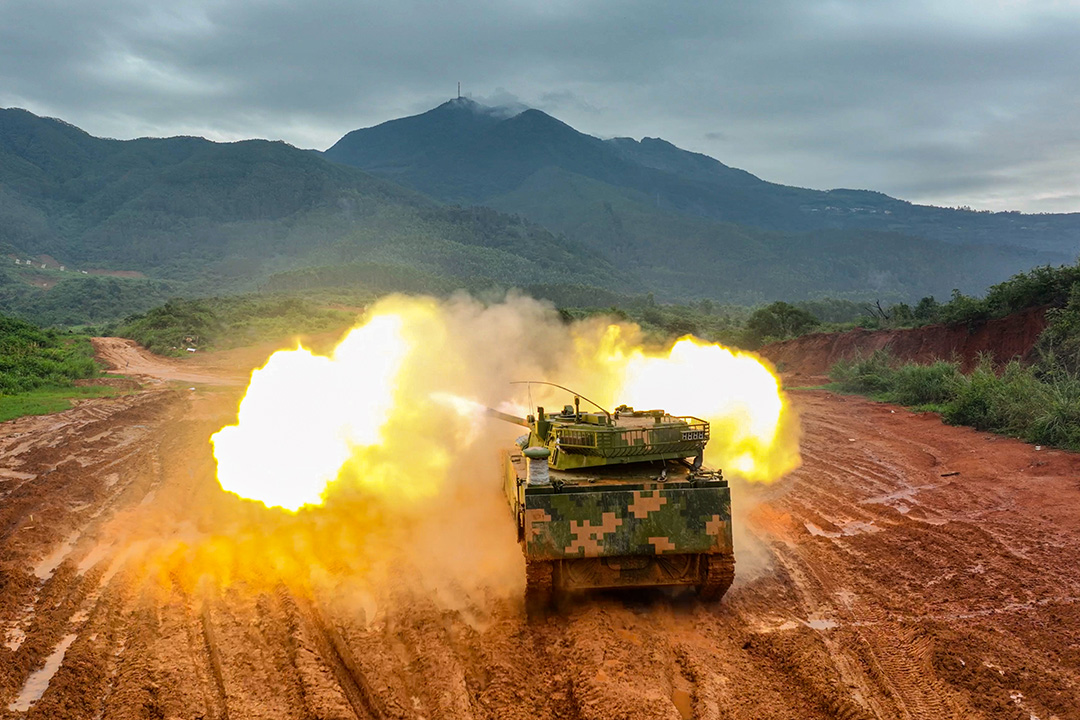Taiwan’s disputed status is a direct result of the Chinese Civil War, in which the defeated Nationalist (Kuomintang) government fled the mainland and moved its government to the island in 1949. While the People’s Republic of China (PRC) has never exercised control over Taiwan, it claims that the island is an inalienable part of China that must be “reunified” with the mainland. In a 2022 white paper, the PRC said the resolution of the Taiwan question is “indispensable for the realization of China’s rejuvenation” and a “historic mission” of the Chinese Communist Party. The PRC has a stated preference for seeking reunification through peaceful means but reserves the right to use force to achieve its aims.
Taiwan’s main political parties, the Democratic Progressive Party (DPP) and the Kuomintang (KMT), hold differing views regarding Taiwan’s relationship with mainland China. President Ma Ying-jeou of the KMT (2008–16) championed the “1992 Consensus,” in which both Taiwan and the PRC agreed that there is only one China—while differing on what “China” means. This (non-consensus) consensus allowed for cross-strait relations to expand and deepen, but led to criticism in Taiwan, as many Taiwanese feared that growing interdependence would limit Taiwan’s choices in the future. Taiwan’s previous president, Tsai Ing-wen of the DPP, declined to endorse the 1992 Consensus. As a result, the PRC cut off official communication in 2016 and has sought to punish Tsai through economic sanctions, diplomatic pressure, and heightened military activities.
While the DPP is seen as the “pro-independence” party, President Tsai stated that there was no need for Taiwan to declare independence because it is already an independent country. In the wake of the PRC’s crackdown on democracy in Hong Kong, Taiwan’s electorate has grown more skeptical of closer ties with the mainland, leading the “pro-China” KMT to struggle at the ballot box. In addition, a 2022 poll from the National Chengchi University in Taipei suggests a growing sense of Taiwanese national identity among the population and an increase in support for Taiwan’s eventual independence.
The ongoing dispute has led to heightened military confrontation in the Taiwan Strait, which geographically separates mainland China from the island of Taiwan. In the First Taiwan Strait Crisis of 1954–55, the PRC shelled the Kinmen and Matsu islands, situated close to the mainland, in an unsuccessful attempt to deter the United States from signing a mutual defense treaty with the Nationalist government. Following the First Taiwan Strait Crisis, Taipei and Beijing reached a tacit understanding of a “median line,” also called the center line, to guide rules of engagement and prevent miscalculation in the Taiwan Strait. The PRC repeated its artillery bombardment of Kinmen in 1958 during the Second Taiwan Strait Crisis. In response, the United States drew up plans for a nuclear strike on mainland China, demonstrating the Dwight Eisenhower administration’s Cold War commitment to Taiwan. The PRC fired live ammunition and missiles into Taiwan’s waters during the Third Taiwan Strait Crisis of 1995–96 to express disapproval of Taiwanese President Lee Teng-hui’s visit to the United States.
In 1979, the United States abrogated the mutual defense treaty it had with Taiwan since 1954 and transferred its official diplomatic recognition from Taipei to Beijing. At that time, it acknowledged (but did not endorse) the PRC’s position that there is one China, and that Taiwan is a part of China. Rather, U.S. policy is to not take a position on Taiwan’s sovereignty and regard its ultimate status as undetermined. Also in 1979, President Jimmy Carter signed into law the Taiwan Relations Act (TRA), which commits the United States to “make available to Taiwan such defense articles and defense services in such quantity as may be necessary to enable Taiwan to maintain a sufficient self-defense capability.” The TRA also obligates the United States to maintain the capacity “to resist any resort to force or other forms of coercion that would jeopardize the security, or social or economic system, of the people of Taiwan.” The TRA, however, does not obligate the United States to come to Taiwan’s defense, and for decades U.S. presidents have refused to say whether they would intervene on Taiwan’s behalf—a policy known as strategic ambiguity.
Tensions between China and the United States over Taiwan amount to a classic security dilemma: both are taking actions they view as defensive that the opposing side views as escalatory. A potential conflict between China and Taiwan has significant implications for U.S. security interests, as the United States would need to balance its desire to support Taiwan against the risks of a broader war with China. The United States has objected to China’s efforts to isolate Taiwan, which include blocking its participation in international organizations, interfering in its elections, pressuring Taiwanese firms to oppose independence, and sanctioning its industries.
Military activities near Taiwan have grown significantly in recent years. China is developing the military capabilities of the People’s Liberation Army (PLA)—the U.S. Department of Defense’s 2021 Military Power Report highlighted China’s prioritization of “joint long-range precision strikes across domains, increasingly sophisticated space, counterspace, and cyber capabilities, and accelerating the large-scale expansion of its nuclear forces.” Moreover, China has integrated emerging technology into its military strategy through an approach known as “intelligentized” warfare. The Department of Defense’s aforementioned report notes China seeks to dominate technologies associated with the “Fourth Industrial Revolution,” such as artificial intelligence and quantum computing. The PRC increasingly sends aircraft into Taiwan’s Air Defense Identification Zone as a show of force, and in 2020, Taiwan reported a Chinese cyberattack on ten government agencies to steal information. As the military balance in the Taiwan Strait has deteriorated, competition between the United States and China has intensified, and the prospect of China using force against Taiwan has risen. In an attempt to ensure Taiwan has the ability to defend itself and in response to a growing military gap, the Donald Trump administration sold more than $18 billion in arms to Taiwan, and in 2020 the State Department eliminated long-standing restrictions on U.S. diplomatic engagement with Taiwanese officials. Moreover, officials now acknowledge that a small but expanding contingent of Marines has been secretly training Taiwan’s forces since at least 2021.
Taiwan is the leading global producer of advanced semiconductors. Taiwan Semiconductor Manufacturing Company produces 65 percent of the world’s semiconductors and 90 percent of the most advanced chips. If conflict between China and Taiwan were to break out, global supply chains would be severely disrupted to the detriment of U.S. interests. Speaking in 2022 alongside MI5 General Director Ken McCallum in London, FBI Director Christopher Wray warned that an invasion of Taiwan would “represent one of the most horrific business disruptions the world has ever seen,” as a potential sanctions regime against China would harm the global economy “at a much larger scale” than the current sanctions response to Russia’s invasion of Ukraine. Bloomberg reports that the U.S. National Security Council anticipates that a Chinese attack and the corresponding loss of the Taiwan Semiconductor Manufacturing Company would cause a $1 trillion disruption to the global economy.
A potential conflict in the Taiwan Strait also has implications for the territorial dispute between China and Japan in the East China Sea. The PRC views the Senkaku/Diaoyu Islands as a part of “Taiwan province” and may seek to take the islands during a conflict. If the PLA Navy were to occupy Taiwan, the Council on Foreign Relations’ David Sacks argues that Japan would struggle to defend its westernmost islands, as well as the Senkaku/Diaoyu Islands, and even Okinawa. During its August 2022 military exercise aimed at Taiwan, China launched ballistic missiles over Taiwan that landed in Japan’s exclusive economic zone, in an attempt to warn Japan not to get involved during a Taiwan conflict. The late Japanese Prime Minister Abe Shinzo stated that Japan and the United States could not stand by if China invaded Taiwan. Current Japanese Prime Minister Kishida Fumio has pledged to double Japan’s defense spending in response to the tense security climate. Taiwan’s and Japan’s islands form a crucial link in the so-called first island chain; if China were to take these islands, it would constrain U.S. naval movements and its ability to contain China in potential future conflicts.
In response to China’s growing assertiveness toward Taiwan, the Joe Biden administration has maintained many aspects of the Trump administration’s approach. In a seeming departure from strategic ambiguity, President Biden remarked in May 2022 that the United States had a commitment to come to Taiwan’s defense, if necessary, and that his administration would uphold that commitment. While the White House denied any formal change in U.S. policy, the president’s remarks reflected a move toward “strategic clarity,” a policy of explicit commitment to defending Taiwan against the use of force by the PRC, rather than strategic ambiguity. President Biden has made at least three similar statements since 2021. Beijing, on the other hand, has accused Washington of breaching its sovereignty and abandoning its One China policy [PDF].
In a further demonstration of support for Taiwan, U.S. Speaker of the House Nancy Pelosi (D-CA) visited Taipei in early August 2022 and met with President Tsai Ing-wen and democracy and human rights activists. Speaker Pelosi’s visit to Taiwan provoked severe condemnation from PRC officials. The PLA launched a four-day military drill and surrounded Taiwan, simulating a blockade. The live-fire exercises were more extensive than those performed during the Third Taiwan Strait Crisis. Chinese military aircraft crossed the median line over three hundred times during the demonstration and continue to cross it on a near-daily basis, effectively erasing the status quo. The PRC applied additional pressure through sanctions, halted exports, and, allegedly, cyberattacks.
After Pelosi’s visit, several other U.S. delegations visited Taiwan, and President Tsai met with Pelosi’s successor as U.S. Speaker of the House, Kevin McCarthy, on a stopover in the United States. Meanwhile, China has intensified threatening air maneuvers, flying more frequently and closer to Taiwan, and Chinese warships have increasingly joined in the movements.
